There’s a certain kind of cavalier attitude I like in a carmaker that you really don’t see anymore. And that makes sense; the kind of cavalier attitude I’m thinking of — a certain willful refusal to consider consequences or repercussions and generally operating with the gleeful abandon of crabgrass — just isn’t really compatible with keeping going as a viable company. And that’s part of why I think we’re not all driving Dunkleys today – the company that perhaps was too weird for its own good.
Dunkley of Birmingham was in operation from 1896 to 1926, and in that time managed to make some wonderfully and deeply strange cars. One of their earliest cars used a diamond formation for the wheels – as in one up front, two driving wheels in the middle, and then one at the rear.
This isn’t exactly unheard of, though it is uncommon. The very first Sunbeam used this layout, and I luckily have this informational sign handy I made for that car because Beau has one that we’ve shown at the Autopian Car Show before:
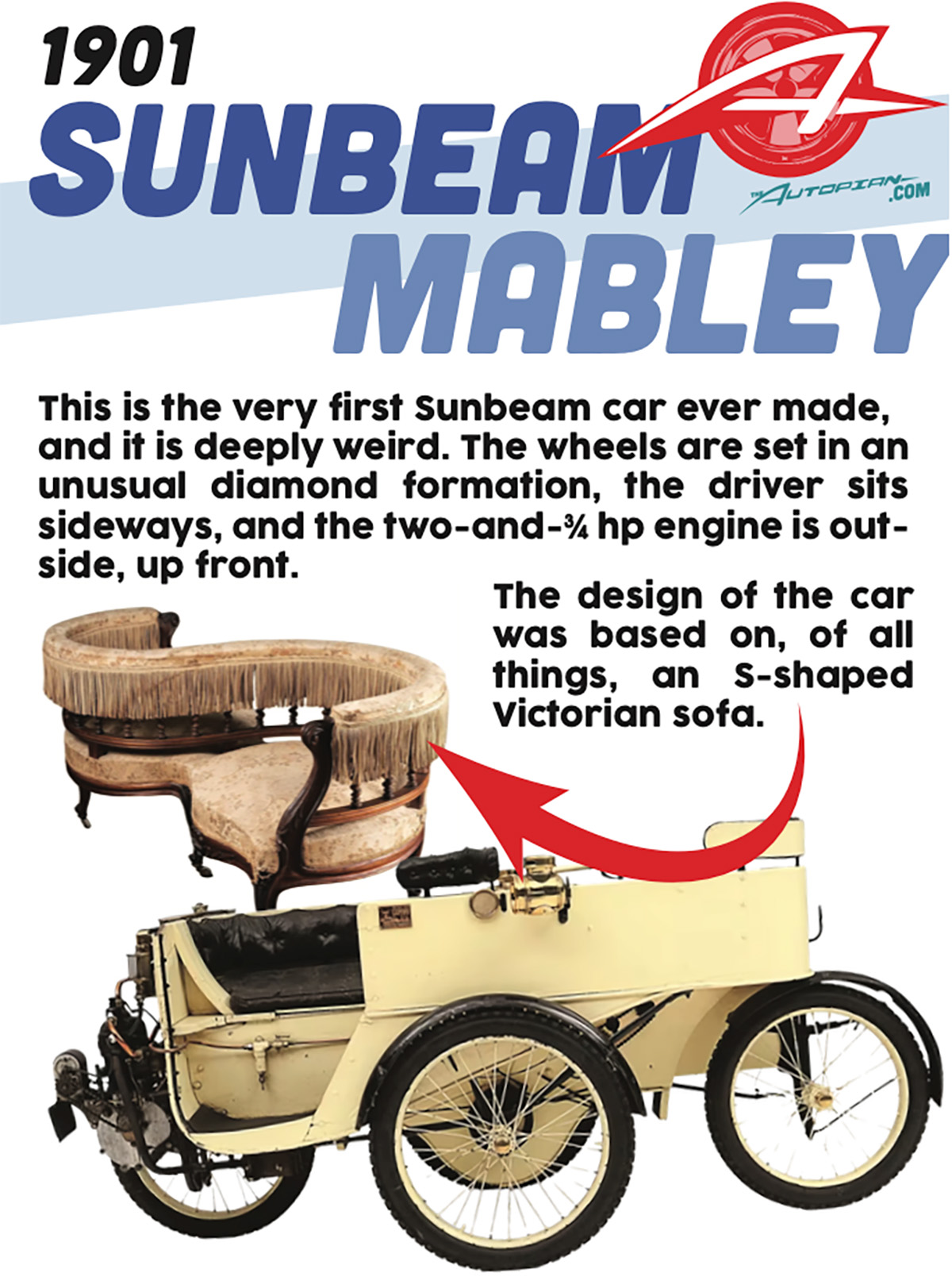
Incredibly, though, the Dunkley version – which I can find no images of at all – was even weirder, as it was designed to only have three wheels down at once, and had two steering tillers. Whomever was heavier, front or rear, did the steering.
UPDATE: Okay, it’s weirder than I even thought. Thanks to commenter Mike, I learned the car was called the Dunkley Moke, and it looked like this:
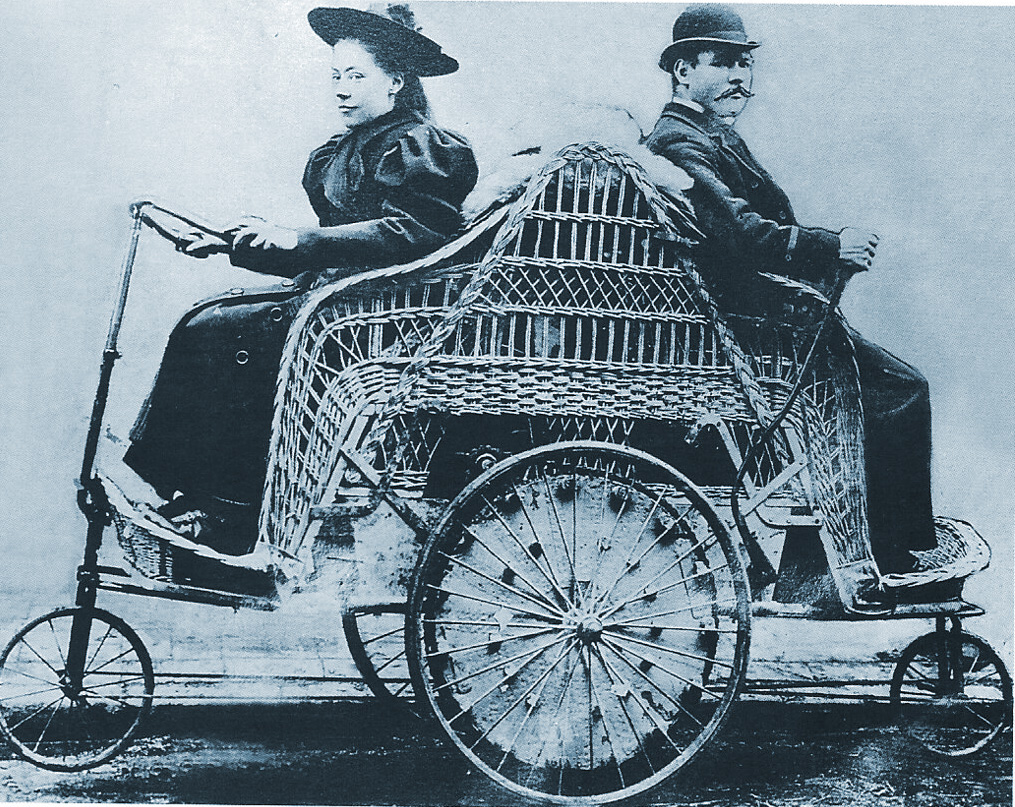
Wicker body! The driving process, according to this Dutch site, seems stranger, too, as it involved co-operation and rocking. The front wheel steered, the rear was the brake. Each passenger had control of their wheel’s function, so to steer, you needed to rock forward, keeping the steering wheel in contact with the ground, but to brake, you needed to rock rearwards, to let the braking wheel make contact.
I would love to see this in action! Maybe we should build a crude replica?
Designed To ‘Steal’ Gas
That’s pretty bonkers, but the car that really fascinates me is Dunkley’s 1901 Patent Self-Charging Motor Car. The name is sort of confusing, because it’s not exactly “self-charging,” which to modern ears would seem to suggest an electric vehicle of some kind. This was very much not that; the Patent Self-Charging Motor Car ran on coal gas, which is what you get if you burn coal in a sealed container, making methane, hydrogen, and carbon monoxide, and this resulting melangé proved to be nice and flammable, excellent for street lighting.
Gas lamps all over Great Britain and other parts of the world soon sprang up, with London and Paris being early adopters at the start of the 1800s. Large municipal networks of pipes to transport coal gas were installed in cities, all to feed gas street lights.
It’s from this network of coal gas pipes that the Dunkley expected you to “charge” from. The car was designed with onboard equipment (hose, compressor, etc) that would let a suave Dunkley driver pull up to any streetlamp, plug in their fueling hose, and suck out as much coal gas as they needed.
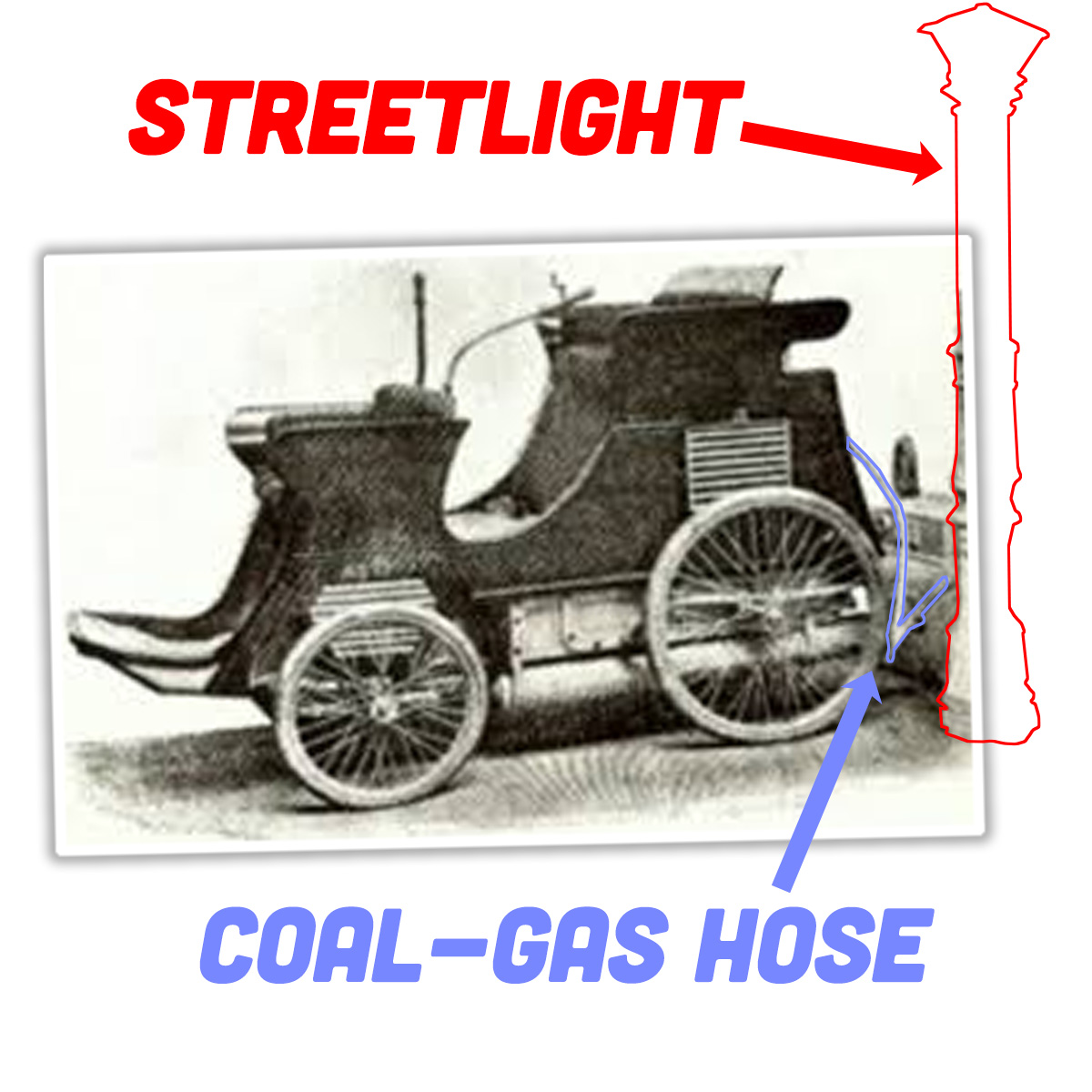
I suppose technically, the name for this process would be “stealing.”
There were no ways to meter the coal-gas as it was being extracted from the lamp-feeding pipes, and there was certainly no arrangement made with the municipal lighting organizations that would give Dunkley drivers free and easy access to as much coal-gas as they wanted. Dunkley just did it, because, objectively, it’s kind of a great idea! There’s all this fuel for your car running mere feet from where your car may be parked, why not take advantage of that? And if it’s free? Is that so bad? The city can afford a little bit of gas shrinkage, right?
It doesn’t seem like enough Dunkley Patent Self-Charging Motor Cars were sold for this ever to become a real issue, and the same goes for the follow-on car from 1902, the Dunkley Number 3, that appeared to use the same opportunistic refueling theft system. That’s the car in the picture up there; I can’t find an image for the earlier Dunkley car.
Baby Transportation
After an abortive attempt to build cyclecars, Dunkley shifted to the baby-transportation industry, making baby strollers, or, as they would have been referred to back in 1923 Britain, prams. But Dunkley wasn’t going to make some boring push-pram, requiring a mom or nanny to use their own muscles to cause the thing to move, like some sort of filthy ox, but instead would build motorized prams.
They started fairly conservatively, with a pram that had a one-horsepower two-stroke motor, mounted horizontally under the pusher/driver’s feet, and driving its own fifth wheel:
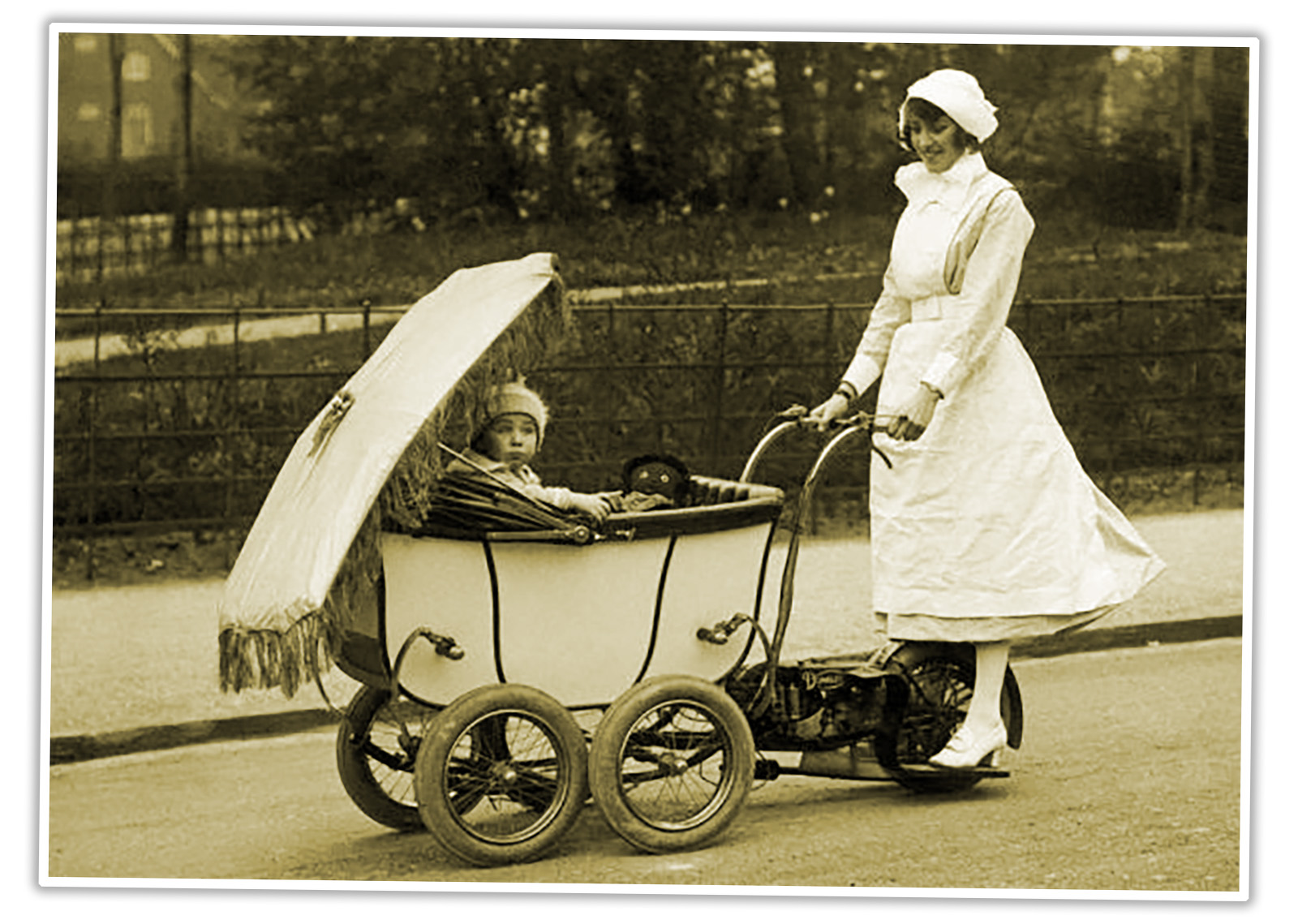
One horsepower you would think would be plenty for a perambulator. Hell, my Changli only has 0.1 hp more, and it’s pretty close to a whole car! Sorta!
But remember, this Dunkley we’re talking about here. They DGAF. They knew that they could make a faster pram, and that was good enough for them, consequences be damned. In 1922, they showed their next motorized pram, powered by a 750cc single-cylinder engine making 21 hp!
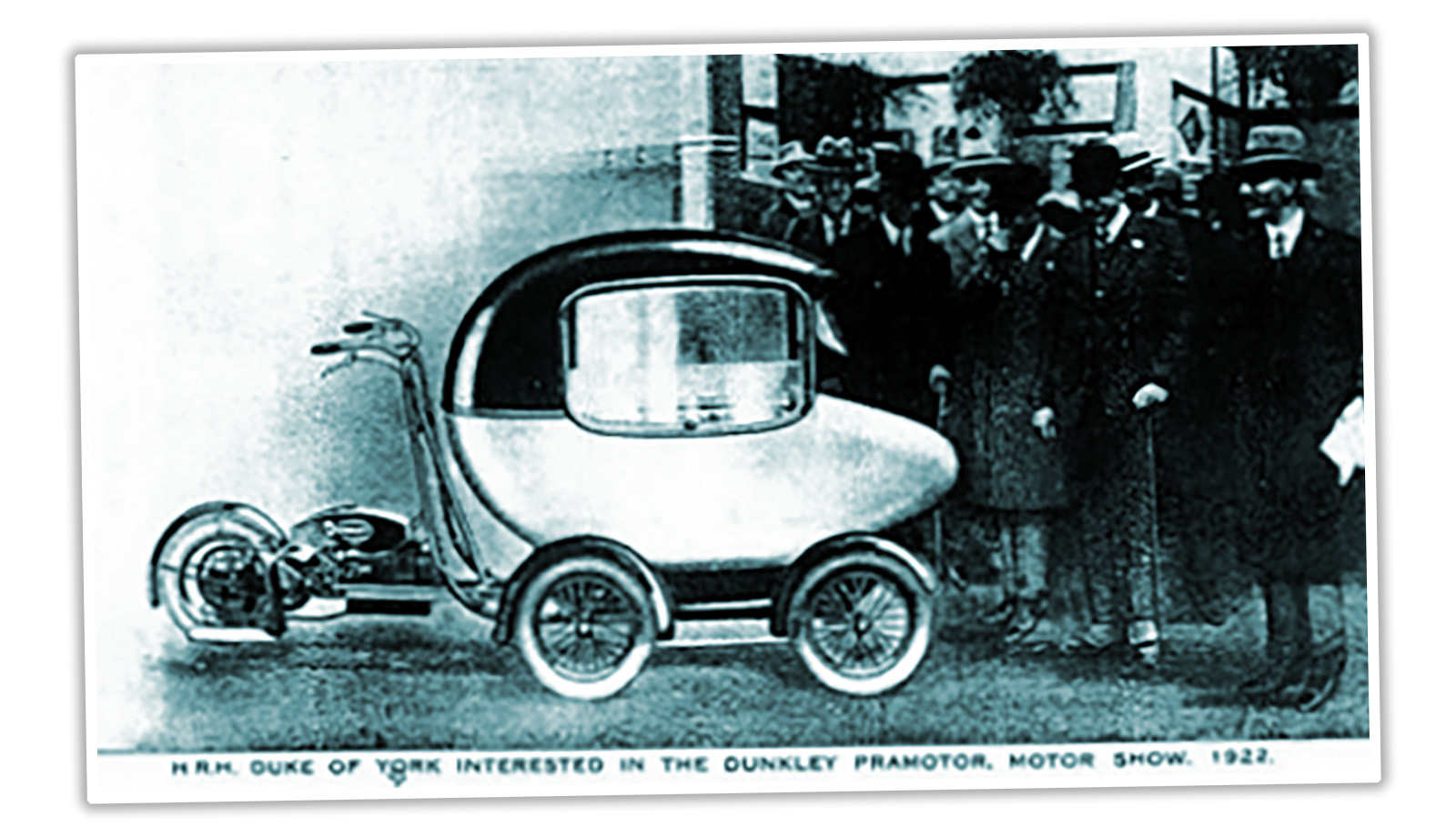
Holy crap, right? That’s a bigger engine than the 603cc flat-twin in my Citroën 2CV and makes almost as much power! As you can see from that picture of the Duke of York inspecting the thing, they also gave it what is essentially a full metal automobile body. This is a car. It’s a car, for a baby, with an adult hanging on to those handlebars behind it. I can’t find any references stating how fast this thing could go, but I’m pretty sure whatever it was it was way, way too fast.
Oh, Dunkley! You were too crazy to live, if we’re honest. Gas-thieving cars and superfast motor-prams are just more than this staid world was able to bear, I’m afraid, but I happily salute you.

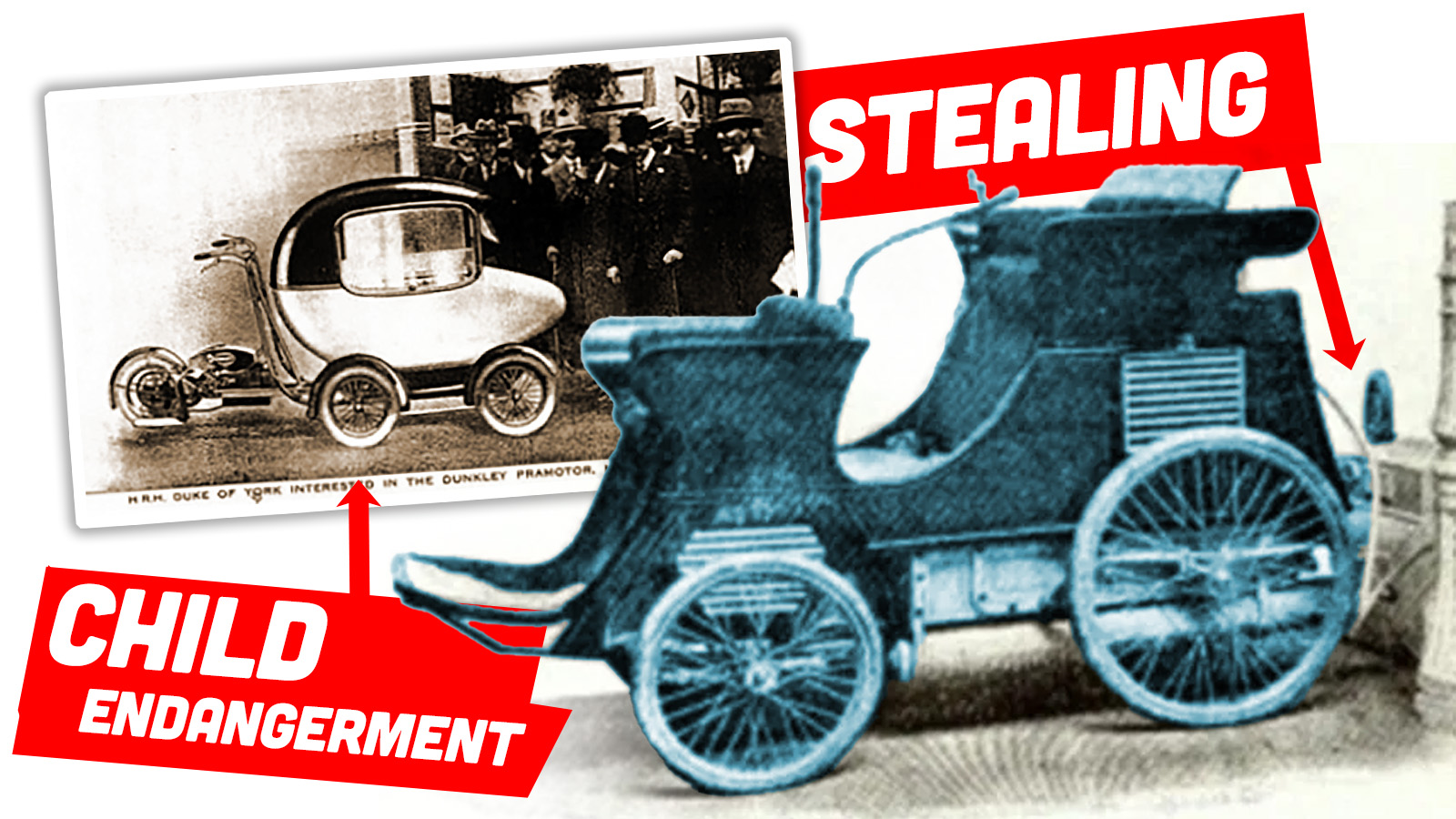




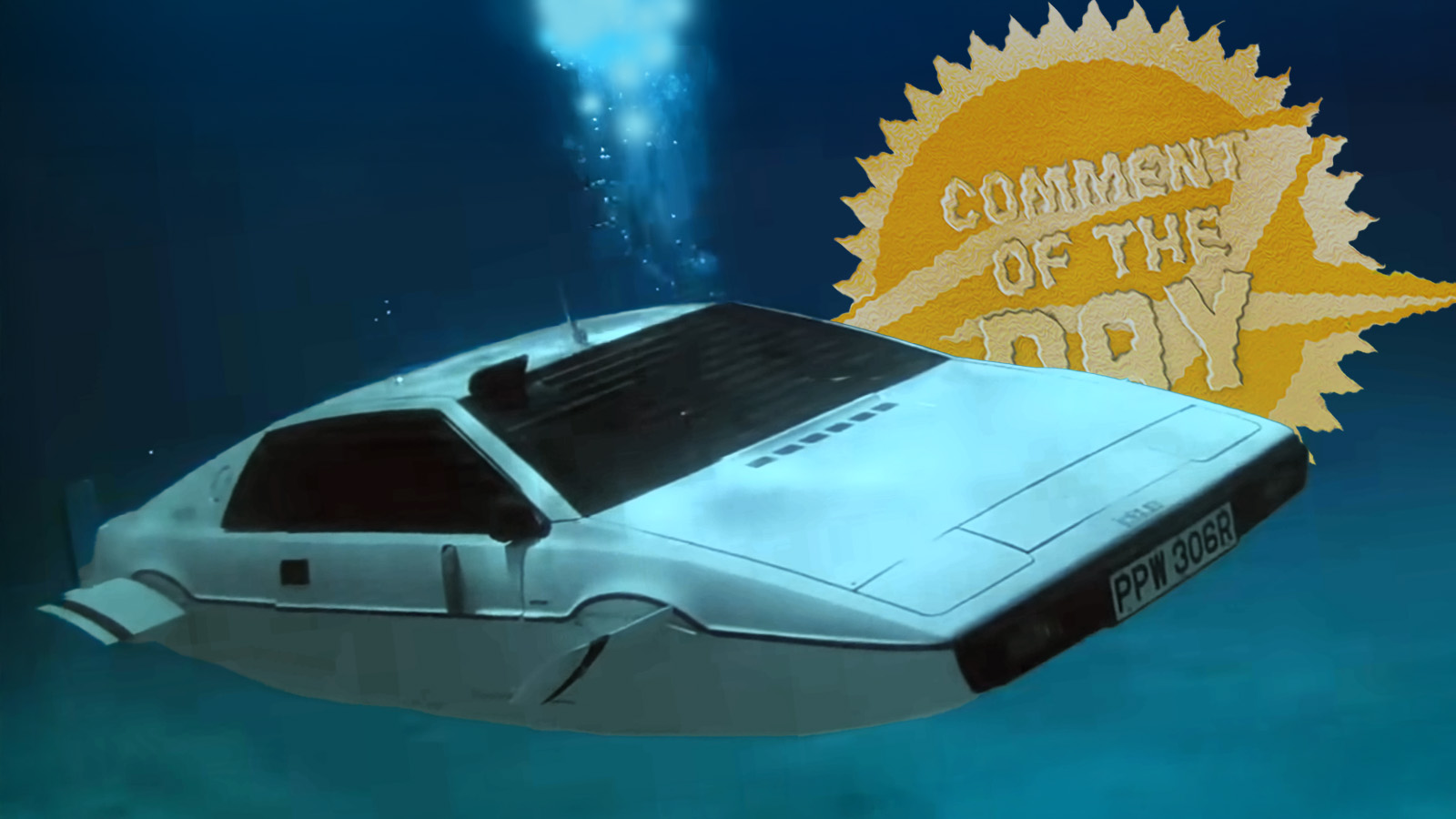


That last pram looks like something Colin Furze would make. Kinda want to see him do it now..
♫ So call me Mabley ♫
Okay, I know this will never happen because everyone involved would get arrested for child endangerment, but I am curious if Delmar (NHRN) could go to sleep riding in the 21hp baby pram.